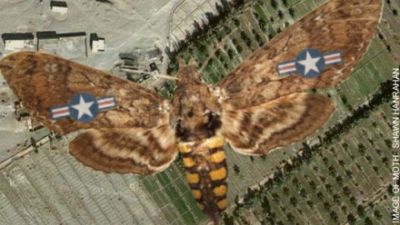Imagine if one day you are sitting in your living room and a fly enters. If you are in an aggressive mood, you will get up and try to kill it. If you are in a whiny mood, you will say something like “not again!”. If you are in a good mood, you will just leave it flying around. By doing that, you just may be exposing your life to a bunch of spies.
DARPA
The US Defense Advanced Research Projects Agency (DARPA) decided that they were fed up with normal drones. Apparently highly advanced remote-controlled flying machines that can spy on any place in the world were too big for their taste. So they funded some researchers in Berkeley to learn how to control flying insects, and that is exactly what they did. They turned the insects into Cyborgs (animal-machine hybrids).
The Technology
In 2009, the Berkeley researchers were able to control a flying beetle by combining two mechanisms. The first was the mechanism of flight, which was done through a very neat trick using electrodes planted into their brains, to give an electric impulse to a certain part of the brain triggering the beetle to start flying. They did not have to specifically advise the beetle to stabilize its flight, they did not have to fine tune it. It is as if the beetle makes its own decision to fly when it receives this impulse, and does it flawlessly.

The second mechanism is to manually control the beetle turning right and left through another set of electrodes connected to the abdomen muscles. To make the beetle turn left, they stimulated the left muscles, and vice versa for the right. Both electrodes were connected to a battery-powered microprocessor that is given radio commands. They used a personal computer to control the beetle; much like a video game.
The most recent breakthrough in this area was in 2012, when Massachusetts Institute of Technology (MIT) researchers, also funded by the USA Military, were able to control a moth. Using a more direct control mechanism, they implanted a probe into the insect’s ventral nerve cord (which is like our spinal cord) with some electrodes attached to the different nerve bundles in it. This way, they were able to direct the moth precisely how sharp to turn in each direction.
What is Next?
The only thing remaining—aside from perfecting the system to work for longer hours and to be more accurately controlled, or trying to use it on houseflies—is to attach a camera to the flying insect. After that, the Military can so easily spy on virtually anywhere! The researchers at MIT, who made the moth fly, are hoping they could apply the same technologies to humans who have had brain strokes and cannot move some muscles anymore. Let us just hope that this is all they are planning to do to humans using this technology.
References
scienceblogs.com
www.theweek.co.uk
www.dailymail.co.uk